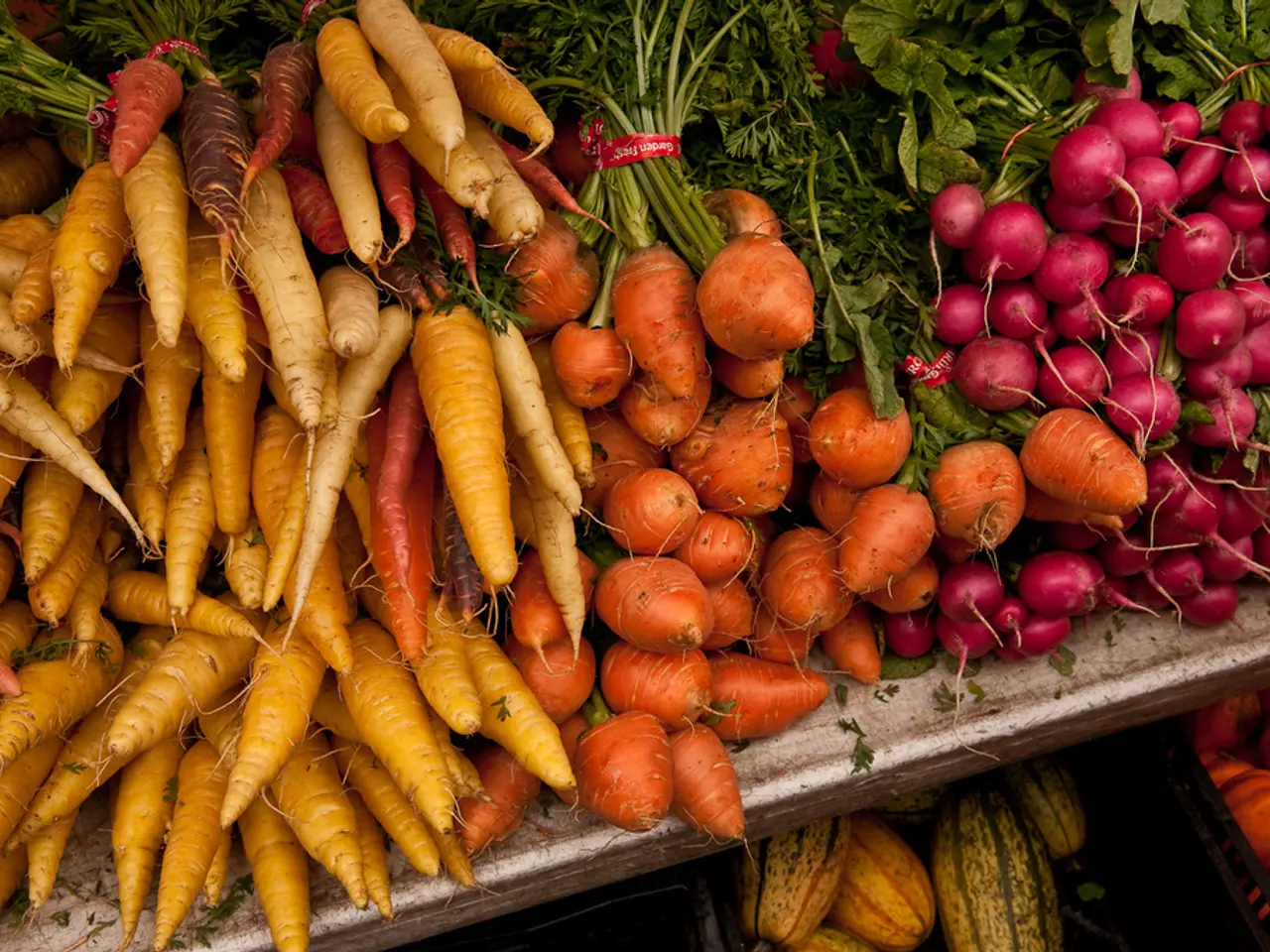Guide for Growing Year-Round Vegetables According to Seasons
For those looking to cultivate a flourishing vegetable garden all year round in temperate zones, here's a step-by-step guide to creating an effective year-round vegetable gardening calendar.
Step 1: Determine Your Frost Dates and Growing Zone
The first step is to establish your frost dates and growing zone, which can be found by researching the average last spring frost and first fall frost dates specific to your region's USDA Hardiness Zone or equivalent climate zone. This information sets the boundaries for outdoor planting windows.
Step 2: Understand Plant Types and Seasons
It's essential to familiarise yourself with cool-season and warm-season crops, each with their unique planting requirements.
- Cool-season crops (e.g., leafy greens, peas, radishes, turnips) are frost-tolerant and can be planted in early spring before the last frost or late summer for a fall harvest.
- Warm-season crops (e.g., tomatoes, peppers, beans) require warmer soil/air temperatures (above ~65°F) and are planted after the last frost in late spring to early summer.
Step 3: Use Soil Temperature, Not Just Air Frost Dates
When planning your garden, remember that soil warms slower or faster than air. To ensure optimal seed germination times, use a soil thermometer to track soil temperature.
Step 4: Plan Succession Planting and Indoor Starts
Stagger plantings, especially for quick-maturing crops like radishes and peas, and start some seeds indoors in late winter to extend the growing season.
Step 5: Create a Monthly or Seasonal Planting Plan
Early Spring (Feb–Mar)
- Start seeds indoors for cool-season leafy greens and hardy root crops to transplant/outplant early.
Late Spring to Early Summer (Apr–Jun)
- Plant warm-season crops outdoors after the last frost, transplanting seedlings as necessary.
Mid to Late Summer (Jul–Aug)
- Succession plant quick crops and cool-weather crops for fall, including crops like beets, radishes, and bush beans in zones 3–7.
Step 6: Track Crop Maturity
Use seed packet maturity dates to schedule planting so crops mature before the first frost or can be harvested successively.
Step 7: Adapt for Local Climate Variations
Keep an eye on local weather variations and adjust planting dates accordingly. Use growing zone calendars as general guides.
By following these steps, you can create a calendar showing which crops to start, plant, and harvest each month to maintain continuous planting and harvesting throughout the year in your temperate zone. Incorporate indoor seed starting, succession planting strategies, and interplanting to bridge gaps around frost periods.
Additional tips for growing vegetables year-round include using season extenders like row covers or greenhouses, choosing hardy varieties, and rotating crops. A planting calendar can help with staggered planting, and choosing fast-growing plants for staggered planting is recommended. Row covers can protect crops from frost in the fall.
With a well-planned vegetable gardening calendar, you'll be able to know what to plant and when, maximising growth, and enjoying a range of vegetables throughout the year.
- Designing a food-and-drink lifestyle that includes home-grown vegetables year-round in temperate zones requires following a year-round vegetable gardening calendar.
- The selection of appropriate plant types is crucial in a year-round vegetable garden; cool-season crops can be grown in early spring and late summer for a fall harvest, while warm-season crops require warm temperatures post-last-frost.
- To implement a successful year-round vegetable garden, take advantage of gardening techniques like succession planting, indoor starts, and implementing row covers or greenhouses for season extension.




